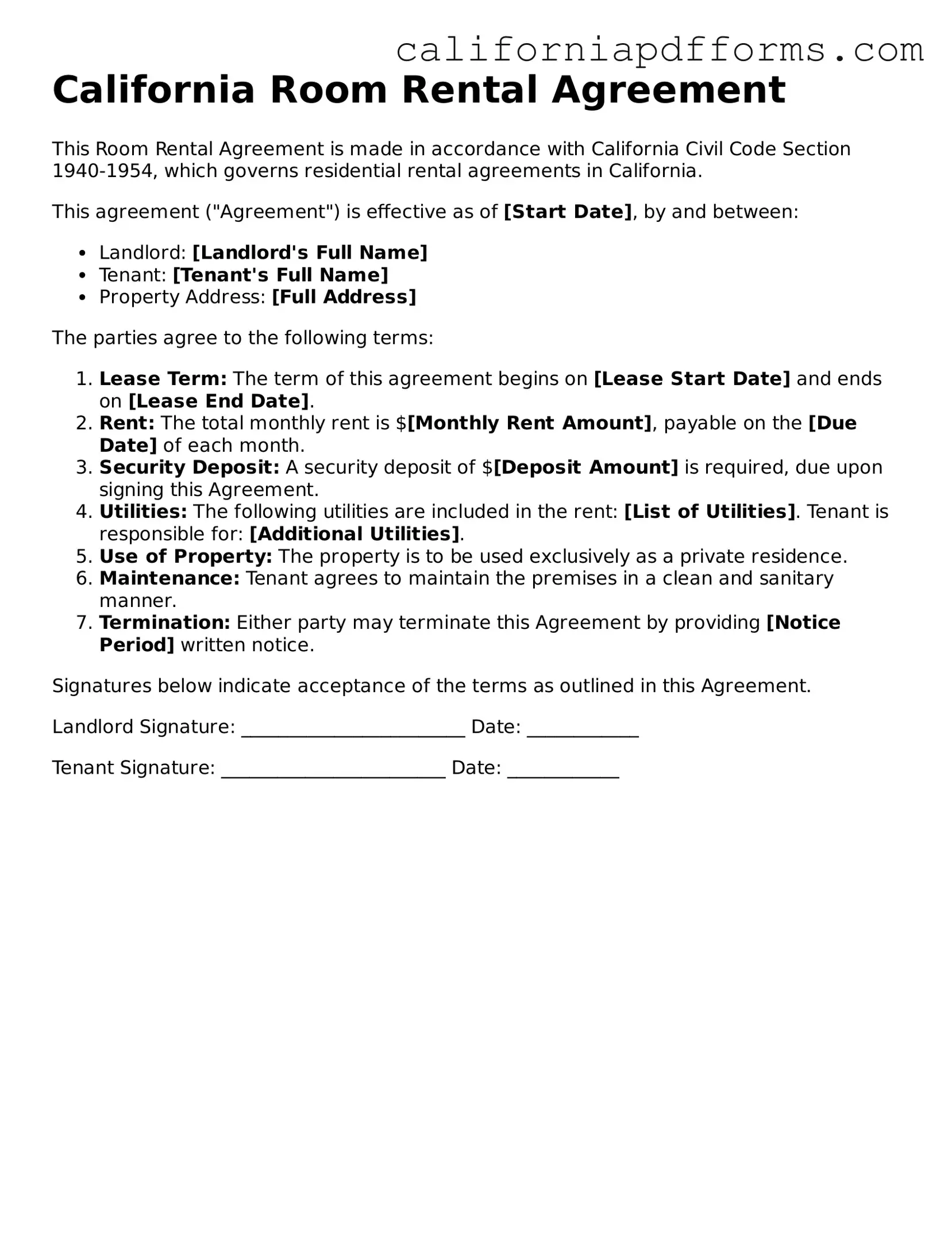What is a California Room Rental Agreement?
A California Room Rental Agreement is a legal document that outlines the terms and conditions between a landlord and a tenant for renting a room in a residential property. This agreement specifies the rights and responsibilities of both parties, ensuring clarity and protection for everyone involved.
What key elements should be included in the agreement?
Essential components of a Room Rental Agreement typically include:
-
Names of the parties:
Full names of the landlord and tenant.
-
Property address:
The specific location of the rental property.
-
Rental amount:
The monthly rent and payment due date.
-
Security deposit:
Details about the security deposit amount and conditions for its return.
-
Duration of the rental:
The length of the rental period, whether it’s month-to-month or for a fixed term.
-
Utilities:
Information on which utilities are included in the rent and which are the tenant's responsibility.
-
Rules and regulations:
Any specific rules regarding the property, such as noise restrictions or pet policies.
Is the Room Rental Agreement required by law in California?
While it is not legally required to have a written agreement for room rentals in California, it is highly recommended. A written agreement helps prevent misunderstandings and disputes by clearly outlining the expectations and obligations of both parties.
How can I terminate a Room Rental Agreement?
Termination of a Room Rental Agreement typically depends on the type of agreement in place. For month-to-month agreements, either party can usually terminate the lease with a 30-day written notice. If the agreement is for a fixed term, the tenant must generally wait until the end of that term unless there are specific provisions for early termination outlined in the agreement.
What happens if a tenant fails to pay rent?
If a tenant fails to pay rent, the landlord has the right to take specific actions. Initially, the landlord may issue a notice to pay rent or vacate the premises. If the tenant does not respond or pay the owed rent, the landlord can begin the eviction process. It is crucial for both parties to communicate openly to resolve payment issues before they escalate.
Can a landlord enter the rented room without permission?
In California, landlords cannot enter a tenant's rented room without proper notice. Typically, a landlord must provide at least 24 hours' notice before entering, except in emergencies. This rule protects the tenant's right to privacy while allowing landlords to maintain their property.
What if there are disputes between the landlord and tenant?
Disputes between landlords and tenants can often be resolved through open communication. If issues persist, mediation services are available to help both parties reach an agreement. If necessary, legal action may be pursued, but this should be considered a last resort.
Are there any specific laws regarding security deposits?
Yes, California law regulates security deposits. A landlord may collect a maximum of two months' rent for unfurnished rentals and three months for furnished rentals. The landlord must return the security deposit within 21 days of the tenant vacating the property, minus any deductions for repairs or unpaid rent, which must be itemized in writing.
Can a tenant sublet the room?
Subletting a room is generally subject to the terms of the Room Rental Agreement. Many agreements require the landlord's written consent before a tenant can sublet the room. Tenants should review their agreement carefully and communicate with their landlord to avoid any violations.
